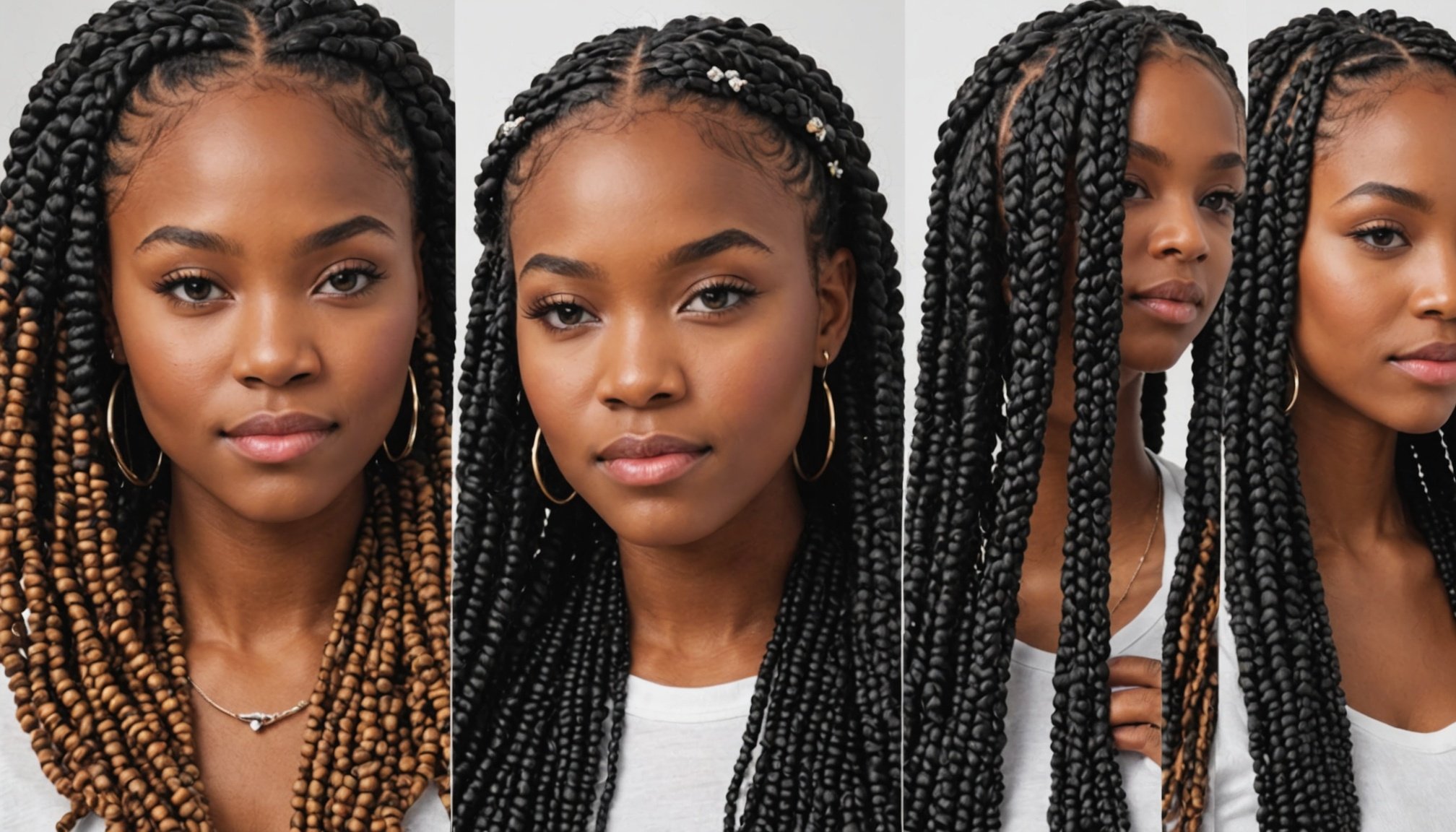Ultimate Guide to Choosing Silicone Hair Beads for Flawless Braids
When it comes to achieving flawless braids and extensions, the right tools and materials are crucial. One of the most critical components in this process is the use of silicone hair beads. Here’s a comprehensive guide to help you choose the perfect silicone hair beads for your hair extensions and braids.
Understanding Silicone Hair Beads
Silicone hair beads have revolutionized the way we approach hair extensions and styling. Unlike traditional methods that use glue, tape, or heat, silicone beads offer a safer, more comfortable, and more natural-looking alternative.
A découvrir également : What Are the Best Practices for Caring for Curly Hair in Humid Climates?
What are Silicone Hair Beads?
Silicone hair beads are small, flexible beads lined with silicone that are used to attach extension hair to your natural hair. These beads are typically made from aluminum and coated with silicone to ensure a secure yet gentle grip on your hair1.
En parallèle : Discover the secrets of natural raw materials today
Benefits of Using Silicone Hair Beads
Natural Look and Feel
One of the foremost benefits of using silicone hair beads is the natural look and feel they provide. Unlike other extension methods, silicone beads blend seamlessly with your natural hair, making the extensions virtually indistinguishable from your own hair. This is particularly true when the beads are placed close to the scalp, about 1 cm away from the root, ensuring they remain hidden and provide optimal comfort1.
Lightweight Comfort
Silicone hair beads are generally made from lightweight materials such as aluminum and are often silicone-lined for better grip and minimal slippage. This lightweight nature ensures that the beads do not create unnecessary stress on your natural hair, offering more comfortable wear throughout the day1.
Versatility in Styling
Silicone hair beads provide the freedom to experiment with various hairstyles. Whether you’re aiming for curly, straight, or wavy hair, these beads allow you to style your hair as you please. They are particularly suitable for more complex hairstyles like updos and braids because the beads are small and well-disguised, not interfering with the intricacies of these styles1.
Types of Bead Extensions
When choosing silicone hair beads, it’s important to understand the different types available, each with its own unique characteristics and suitability.
I-Tip Bead Extensions
- Application Method: Attached using aluminum beads.
- Suitability: All hair types.
- Maintenance: Monthly adjustments.
- Description: I-Tip bead extensions incorporate a unique “I-tip” shaped end that is inserted into a bead and then clamped onto your natural hair. This method is recognized for its ability to cater to a wide range of hair types and emphasizes a natural look and feel1.
Micro-Bead Extensions
- Application Method: Use smaller silicone-lined beads.
- Suitability: Especially suitable for fine hair.
- Maintenance: 6-8 weeks.
- Description: Micro-bead extensions are designed for those with finer hair types. They use significantly smaller beads, reducing visibility and offering a more discreet extension experience. The smaller size and frequent use of silicone linings make micro-beads an attractive option for those prioritizing both subtlety and security1.
Choosing the Right Beads for Your Hair Type
Consultation and Selection
Before choosing silicone hair beads, it is essential to consult with a professional hairstylist. During the consultation, your hair’s density, texture, and health will be assessed to recommend the type of bead extensions that will best suit your hair type.
- Hair Consultation: Consulting with a professional hairstylist is the first crucial step. The stylist will assess your hair’s density, texture, and health to recommend the right type of bead extensions1.
- Color and Texture Matching: The stylist will closely examine your hair color, undertone, and texture to select extensions that are a near-perfect match. This ensures that the extensions blend seamlessly with your natural hair1.
Application Steps
The application process for silicone hair beads involves a strand-by-strand technique that requires precision and care.
- Strand by Strand Technique: Small sections of your natural hair are threaded through a bead, followed by the extension strand. The bead is then clamped down securely near the root of your natural hair using a special tool1.
- Bead Placement: Bead placement is crucial and typically involves placing the beads close to the scalp, about 1 cm away from the root, to ensure they remain hidden and provide optimal comfort1.
Maintenance and Care Tips
Proper maintenance is pivotal for the longevity and health of your natural hair when using silicone hair beads.
Washing Bead Extensions
- Gentle Cleansing: Use a sulfate-free, nourishing shampoo. Always focus on cleaning the scalp first and then gently work your way down to the tips. Avoid scrubbing or bunching your hair as it may weaken the bead’s grip and result in slippage or damage1.
- Avoiding Tangling: Wash your hair in a downward motion and apply a hydrating conditioner only to the mid-lengths and ends of the extensions. Avoid applying conditioner near the beads as it could cause them to loosen1.
Proper Brushing
- Using the Right Brush: A loop brush is generally recommended for extensions. These brushes are designed to glide through the hair effortlessly, minimizing tugging and potential loosening of the beads1.
- Brushing Techniques: Always start brushing from the tips and work your way up to the roots. This reduces stress on the natural hair and bead attachments. It’s advisable to hold the hair near the bead while brushing to alleviate any pulling pressure on the bead itself1.
Longevity of Bead Extensions
The lifespan of silicone hair beads depends on several factors, including the quality of the hair, bead material, and the care they receive.
| Average Duration | Type of Bead | Hair Type |
|---|---|---|
| 4-6 months | Silicone-lined | Human Hair |
| 3-4 months | Metal | Human Hair |
| 2-3 months | Silicone-lined | Synthetic Hair |
| 3-4 months | Metal | Synthetic Hair |
High-quality extensions made from human hair tend to last longer than synthetic ones. Additionally, silicone-lined beads are less damaging to the hair and can extend the lifespan of your extensions1.
Practical Insights and Actionable Advice
Tips for Styling
- Updos and Braids: Silicone hair beads are suitable for more complex hairstyles like updos and braids. Because the beads are small and well-disguised, they do not interfere with the intricacies of these styles1.
- Heat Styling: Before heat styling, always apply a heat protectant to both your extensions and natural hair. This helps in preventing damage and ensuring the extensions last longer2.
Tools and Products
- Must-have Tools: Essential tools include silicone beads, a bead threader tool, mini pliers, and a bead opener. For maintenance, a Tangle Teezer or a wide-tooth comb is recommended2.
- Hydration and Protection: Use a light leave-in detangler or leave-in conditioner to make detangling easier and protect the strands from damage. Apply an oil or serum to seal your ends, and avoid applying protein treatments or heavy conditioners to your extensions2.
Choosing the right silicone hair beads is a critical step in achieving flawless braids and extensions. By understanding the different types of bead extensions, consulting with a professional, and following proper application and maintenance steps, you can ensure a natural look, comfort, and longevity of your hair extensions.
For more detailed information on how to choose and use silicone hair beads, you can visit this comprehensive guide.
Remember, the key to successful bead extensions lies in proper care and maintenance. By following these guidelines, you can enjoy long-lasting, beautiful hair that looks and feels natural.











